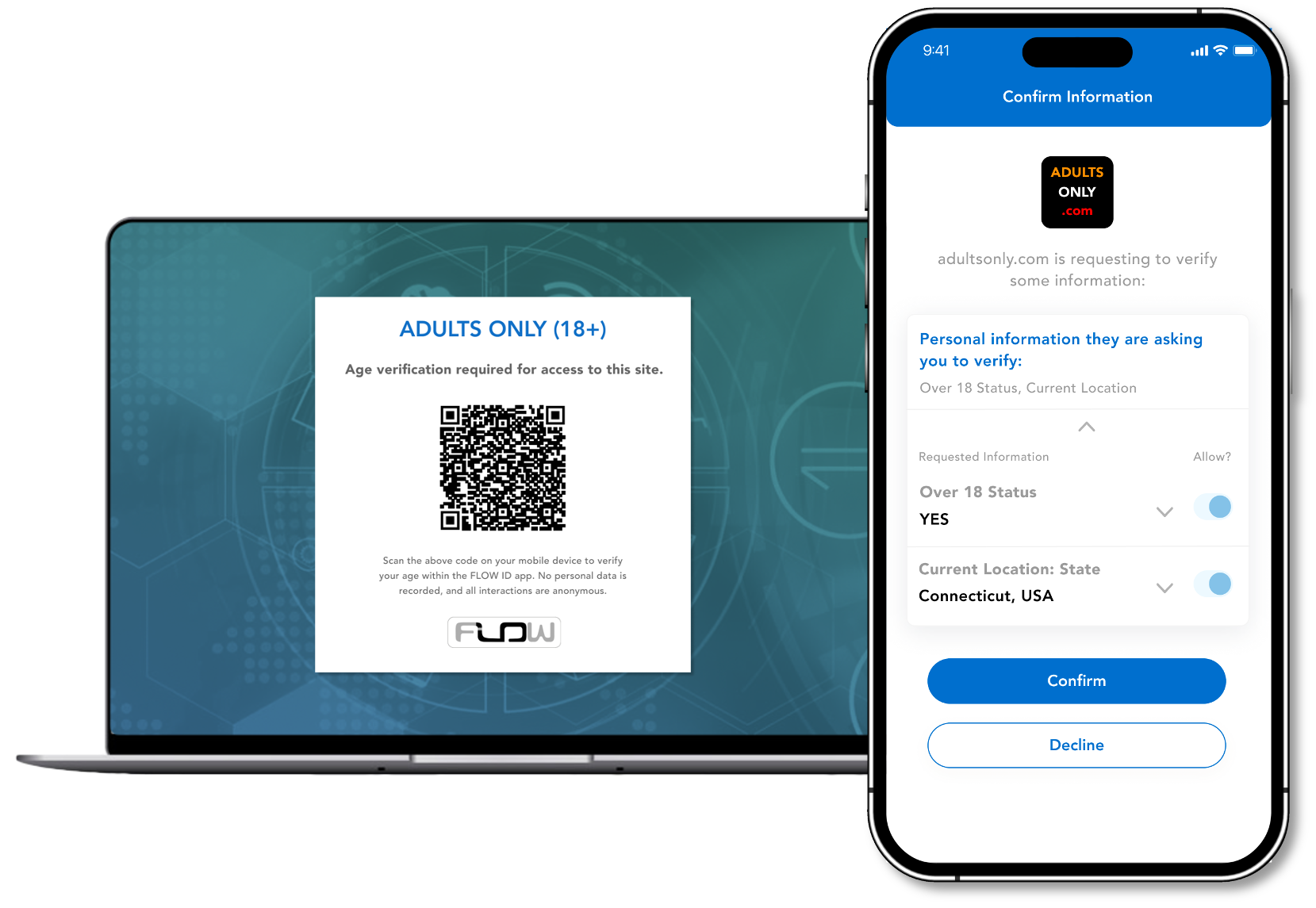How is FLOW ID Different?

FLOW ID is a privacy-first, user-owned digital identity platform, independent of any other commercial entity. The intent of the platform is to verify yourself once, and then represent yourself to all other sites with a single identity, rather than re-uploading personal credentials to every site you visit. FLOW ID was built from the ground up with user privacy and security in mind. All user data is stored locally on-device, and only the minimum is shared externally, specifically at the direction of the user.
FLOW ID’s solution for age gating balances the need for privacy, a smooth user experience, and the certainty of the information being shared. We’ve boiled it down to just the essentials. The FLOW ID Age Gate only requests 2 pieces of information from the user: over 18 status (simple YES or NO), and the US state in which they are located. Nothing more. The age threshold of 18 is compared against the user’s government issued photo ID, scanned only once during user onboarding, and stored encrypted locally on-device. The date of birth is extracted from this image and used to determine over 18 status. The location is a one-time sample from GPS, where only the state is extracted. This directly counters the concern that location-based age gates are too easily subverted by using VPNs, which fool IP-based geolocation schemes.
